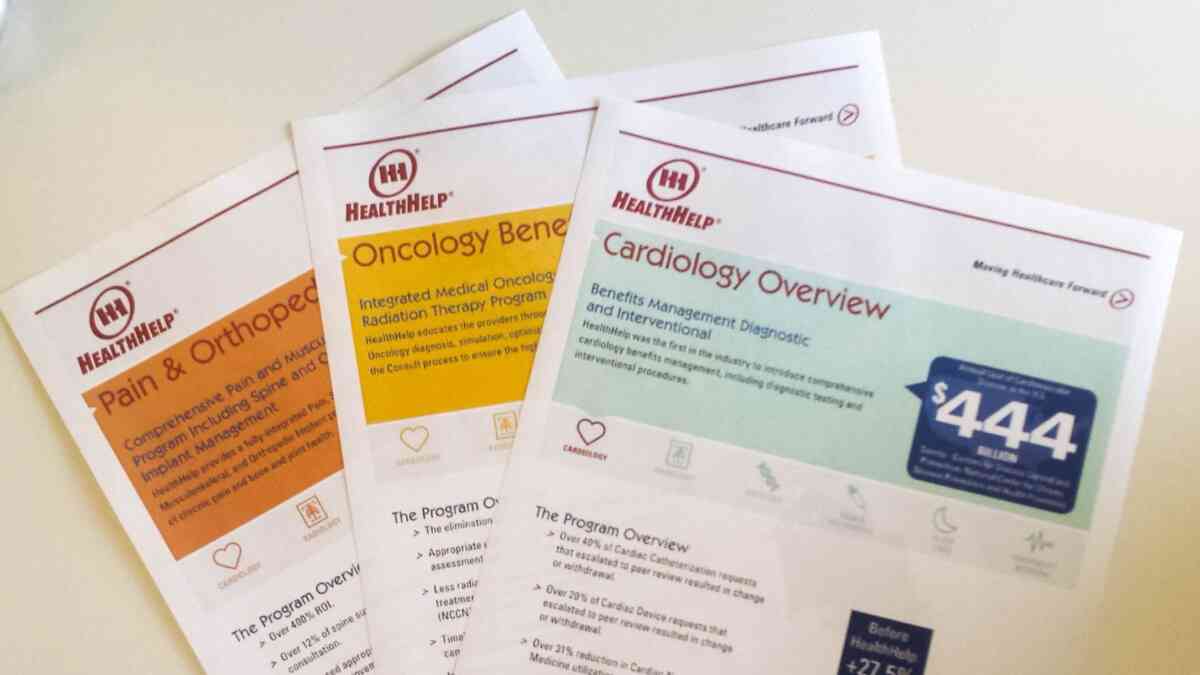
It Doesn’t Have to Be Boring: How to Create Engaging B2B Print Collateral
Easy-to-read, attention-grabbing B2B marketing collateral can help your company stand out and increase leads.
Thirty years ago, business-to-business (B2B) print collateral was composed of pages of words and numbers to describe a product or service. The marketing team consisted of technical writers, typesetters, and illustrators who hand-drew pie charts and diagrams for marketing collateral, which was often printed poorly in plain black-and-white.
With today’s technology, companies can market their products and services with full-color, highly graphical print materials that use quality paper and specialty inks—and, in many cases, they should.
Yet many companies are still under the impression that these materials can only sell their products and services with an outpouring of words and numbers. These lengthy pieces don’t compute in today’s hurly-burly business culture, in which professionals are busier than ever and simply don’t have time to read long product descriptions, no matter the medium.
Instead, today’s B2B marketing needs to provide bite-sized information that connects readers to places where they can get more in-depth information if they want it. Engaging your target audience means quickly grabbing its attention and presenting the most important information in a visually appealing, easy-to-digest format.
Wait… We’re Talking about Print?
While digital marketing is sweeping the world, there continue to be very good reasons for creating and printing materials on paper. Despite what we’ve heard for years, print is not dead. Instead, people use it differently and as part of a larger effort that includes digital marketing.
Printed materials still play critical roles at conferences, in presentations, and for sales meetings. Also, printed materials have pride of place in direct-marketing efforts—including mailers, flyers, and signs—and in advertising in print publications, which still garner significant exposure to many target markets.
Best Practice: Break up Your Text
For printed collateral—if not all collateral, whatever the medium—text should be quickly scannable. Huge blocks of words turn readers off and subtly tell them that your product, service, or company is boring. Make long technical descriptions available only to people who request them—not part of the standard set of marketing and promotional collateral.
To keep it punchy,
- shorten long paragraphs to focus on what matters most,
- use bullet points to group similar ideas and make lists, and
- include calls-to-action that lead readers to a website, blog, or landing page for more information.
Some industries require lengthy documents on products’ research and development to accompany marketing materials. If this is the case in your industry, try breaking paragraphs into five lines or less and using headings to easily separate subjects. Doing so can make a huge difference to readability.
Best Practice: Crisp, Clear Language
Make reading your marketing collateral easy.
Eliminate overly elaborate sentences, strings of descriptors, and industry jargon where possible. Trim the fat.
Further, aim to write to the sixth- or seventh-grade level. You might have to go as high as grade eight to ten for some of your business copy, but print marketing materials can even be as low as a fourth-grade reading level and be incredibly successful.
And no, we’re not saying your audience is stupid. Rather, your audience is busy—and easily distracted by the noise of today’s busy business culture. Don’t make reading your marketing materials any more difficult than needed for your target audience to take your carefully crafted call to action.
Best Practice: Use Images
Interspersing words with photographs, illustrations, and graphics makes every sales sheet and report more engaging.
More than just breaking up text, graphics and images magnify points made by the words. Graphs, pie charts, and diagrams are the traditional way to provide data and clarify copy points. Photos and illustrations can convey emotion, trust in, and respect for your product. And, even if it’s a long document, using an image or graphic on every other page keeps the reader engaged.
Print collateral can take these traditional visual forms further to better tell the story of who you are and build your brand. Graphics that spill off the page can make your product feel modern and forward-thinking. Circles can convey a sense of interconnectedness, unity, and teamwork. Arrows, pointers, and similar graphics can not-so-subtly tell readers where to look. Illustrations and icons can visually describe a specialty, division, or subject, such as using a wrench to signify repair services.
Take Risks—Even with Print
Especially today, when its part of a larger marketing mix that includes dynamic and responsive digital platforms, print marketing collateral must never bore the intended audience.
All companies, products, and services should take risks with their print materials. When done well, printed collateral can become a critical touchpoint for marketing campaigns while building the company’s brand and solidifying its market position.
Want help to think through how print collateral can best serve your business goals and fit into your marketing strategy and plan? Contact FrogDog.
Updated: Oct 09, 2019

We do not spam. And you can unsubscribe when you want.